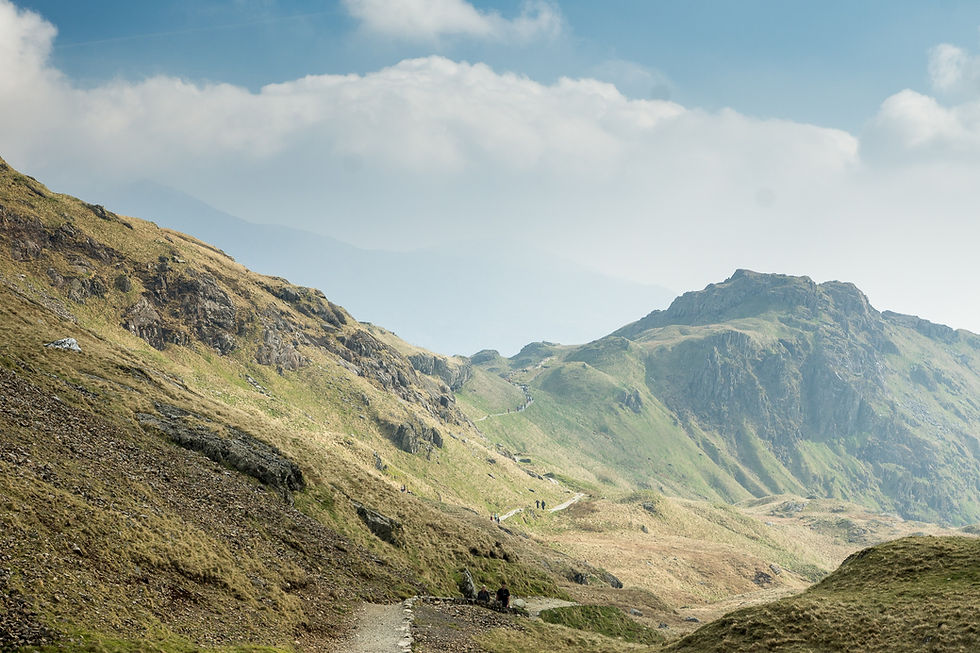WHY WAS SNOWDONIA MADE INTO A NATIONAL PARK?
- Susan Hunt
- Oct 8, 2019
- 4 min read
Updated: Feb 15, 2020
Hello everyone!
*The range of habitats in the park is recognized nationally and internationally - from Local Conservation Areas and Sites of Special Scientific Interest to Special Areas of Conserva rarity, the Gwyniad, a unique sub-species of the European whitefish, trapped in the lake at the end of the last Ice Age, 10,000 years ago

The Gwyniad, a unique sub-species of the European whitefish, trapped in the lake at the end of the last Ice Age, 10,000 years ago.! whole post is related to Snowdonia & surrounding areas leave a comment if you found this of any interest & if you would like me to write another blog to do with this subject or another subject that you would like.
So here are a few facts for you about Snowdonia National Park.
*Snowdonia National Park was established on 18th October 1951 following the 1949 National park and Access to the Countryside Act.
*The boundaries to the National park were identified in 1950 following recommendations from the National Park commission on which Sir Clough Williams Ellis served as a member.

* Not forgetting the beautiful Dyfi, Mawddach and Dwyryd estuaries plus 23 miles of coastline and sandy beaches contribute to the overall diversity of the landscape. sites were excluded from the park.
*As the third National park in the United Kingdom and the first in Wales. ... It is also an area steeped in history and legend as the natural fortress for the Princes of Gwynedd and for Llewellyn, the last true Prince of Wales.
*The Park covered a total of 837 square miles and was the third to be given National Park status but was the first designated National Park in Wales. 1951 also saw the designation of The Lake District, Peak District and Dartmoor as National Parks.
*Snowdonia's landscape is unique. Its nine mountain ranges cover approximately 52 percent of the park and include many peaks that are more than 3,000 feet (915m).
Snowdonia is a delightfully varied landscape of steep river gorges, waterfalls and green valleys.
* Not forgetting the beautiful Dyfi, Mawddach and Dwyryd estuaries plus 23 miles of coastline and sandy beaches contribute to the overall diversity of the landscape.
*The range of habitats in the park is recognised nationally and internationally - from Local Conservation Areas and Sites of Special Scientific Interest to Special Areas of Conservation and the Dyfi Estuary which is a proposed World Biosphere Site.

*The range of habitats in the park is recognized nationally and internationally - from Local Conservation Areas and Sites of Special Scientific Interest to Special Areas of Conservation and the Dyfi Estuary which is a proposed World Biosphere Site.
*Snowdonia is in the ancient Kingdom of Gwynedd and a stronghold of 'Cymraeg', the Welsh language.
*The Welsh name for the national park is Eryri.·There are more than 100 lakes bigger than an acre in size in Snowdonia, from Llyn Ogwen in the north to Tal y Llyn in the south.·Approximately *20 percent of the Snowdonia National Park is specially designated by UK and European law to protect its distinctive wildlife.

* Amongst the Arctic alpine plants found in the high peaks, the Snowdon Lily is unique to Snowdon.
*The range of habitats in the park is in England and Wales; and 56 Sites of Special Scientific Interest ·In Llyn Tegid, the largest natural lake in the park, live another Conservation and the Dyfi Estuary which is a proposed World Biosphere Site.
* So, too, is the Snowdon or Rainbow Beetle.·There are 17 National Nature Reserves in Snowdonia;

* More than in any other national park in England and Wales; and 56 Sites of Special Scientific Interest ·In Llyn Tegid, the largest natural lake in the park, live another Snowdonia rarity, the Gwyniad, a unique sub-species of the European white fish, trapped in the lake at the end of the last Ice Age, 10,000 years ago
.
* landscape illustrates the history of the area through Stone Age burial chambers, Roman forts, churches, castles, slate quarries, and other industrial works.· rarity, the Gwyniad, a unique sub-species of the European whitefish, trapped in the lake at the end of the last Ice Age, 10,000 years ago
*History and culture are everywhere in Snowdonia and the Welsh language is the mother tongue of 65 percent of the population.

* You're sure to see and hear the Welsh language in use when you visit.·Snowdonia’s landscape illustrates the history of the area through Stone Age burial chambers, Roman forts, churches, castles, slate quarries, and other industrial works.
* rarity, the Gwyniad, a unique sub-species of the European whitefish, trapped in the lake at the end of the last Ice Age, 10,000 years ago. rarity, the Gwyniad, a unique sub-species of the European whitefish, trapped in the lake at the end of the last Ice Age, 10,000 years ago
*The range of habitats in the park is in England and Wales; and 56 Sites of Special Scientific Interest ·In Llyn Tegid, the largest natural lake in the park, live another Conservation and the Dyfi Estuary which is a proposed World Biosphere Site. designated by the UK and European law to protect its distinctive wildlife.
·



















Comments